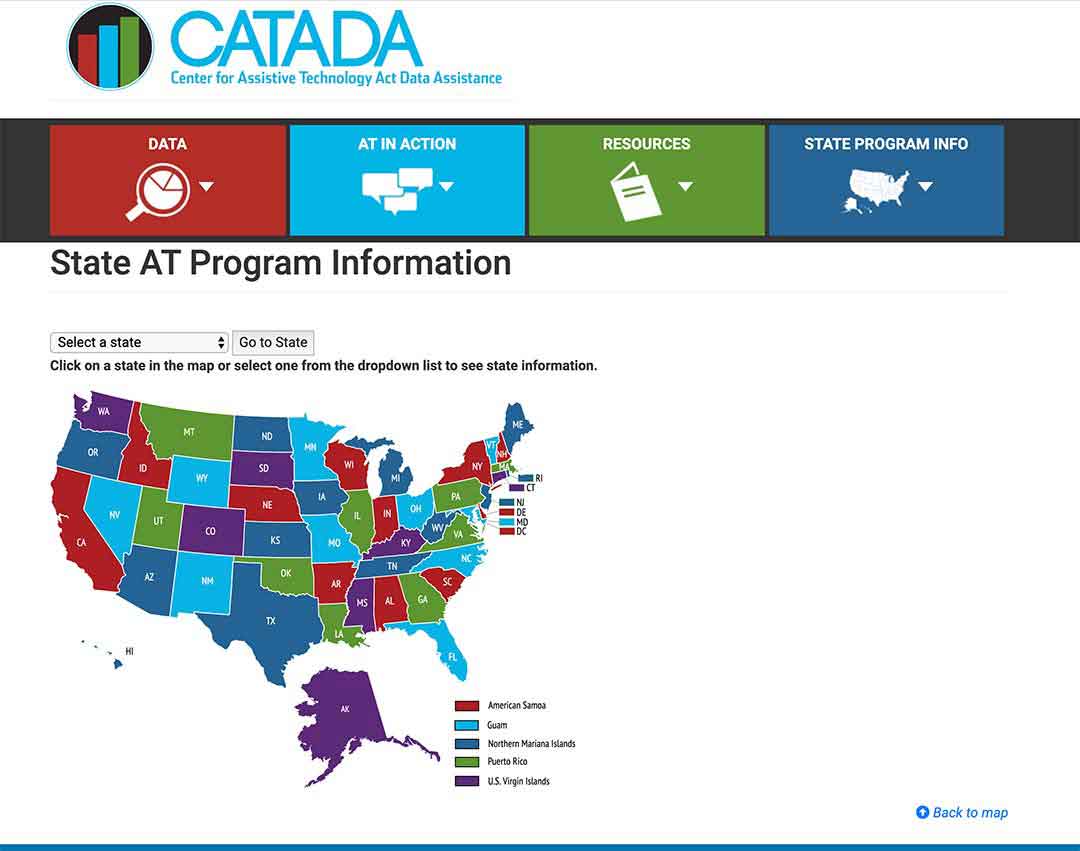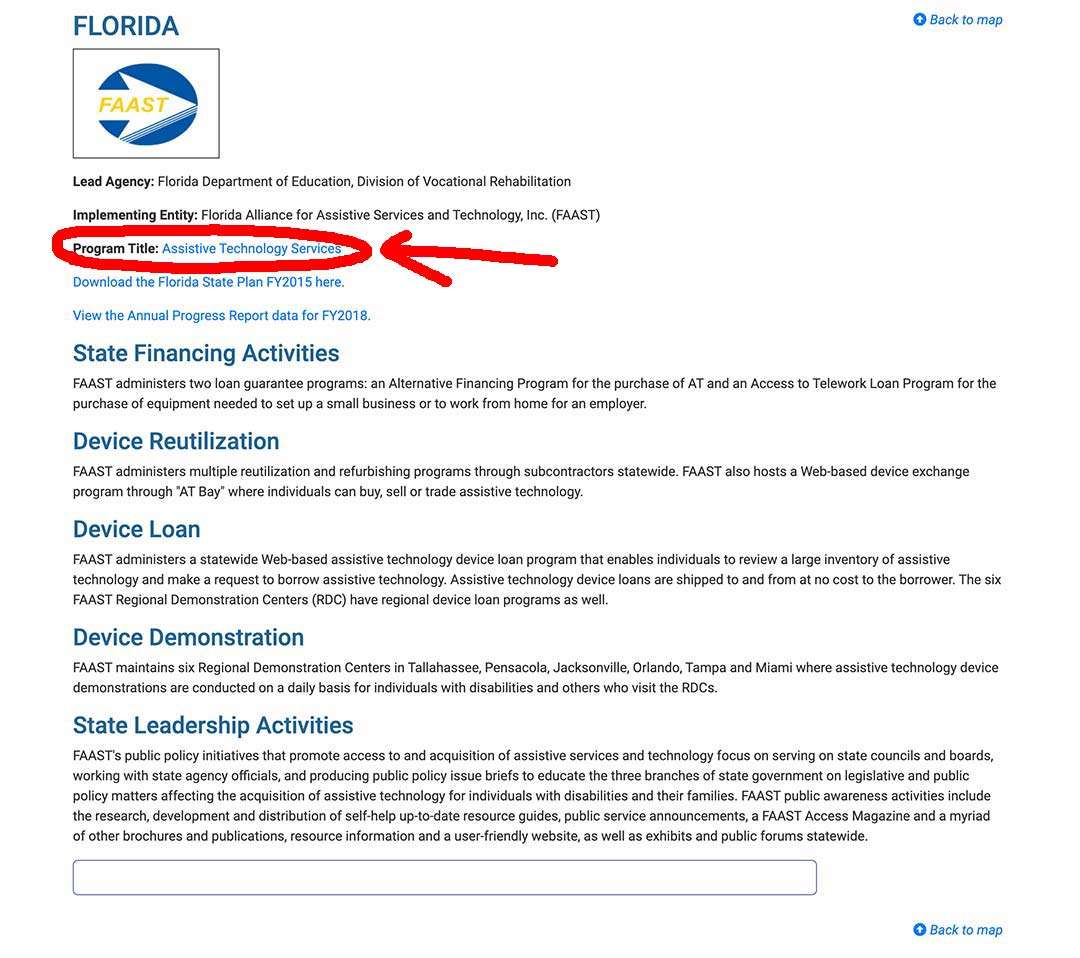Getting in and out of the bathtub, can, for elderly adults, present many difficulties and risks. And it isn’t hard to imagine all the accidents you could have. A great solution to these problems comes in the form of bath chairs and transfer benches.
Medicare does not consider bath chairs as “medically necessary”, and so does not usually cover them.
However, Medicare Advantage Plans, Medicaid, veterans benefits and other state funding sources do cover bathroom equipment that Medicare does not.
The fact that Medicare Part B does not usually cover bath and shower chairs, does not mean that it never will.
If you are to get coverage for a bath chair from Medicare Part B, you are going to need to get a prescription for it from a Medicare-enrolled physician, stating that it is “medically necessary”.
The physician is going to have to show and document how the bath chair is going to help with your diagnosed medical condition.
Even if you get the prescription, and all the relevant documentation, Medicare may still refuse coverage.
Contents Overview & Quicklinks
Does Medicare cover shower chairs ?
Can a doctor prescribe a bath or shower chair ?
Sample letter of medical necessity for a bath or shower chair
Diagnosis/guidelines for a bath or shower chair
Do Medicare Advantage Plans cover bath chairs ?
Does Medicare cover bathroom equipment ?
Will Medicare pay for bathroom modifications ?
What equipment does Medicare pay for ?
Medicare-approved medical equipment supplier near me ?
List of durable medical equipment typically covered by Medicare
How do you get DME covered by Medicare Part B ?
What do you do once you have a prescription for your DME ?
What to avoid when purchasing DME with Medicare coverage ?
What happens if you are in a skilled nursing facility ?
Do Medicare Advantage Plans cover bath chairs ?
Free assistance with understanding Medicare
Does Medicaid cover bath/shower chairs and bathroom equipment ?
How to find the HCBS programs, waivers and 1915 waivers in your state ?
What if your revenue is a bit too high to qualify for Medicaid ?
What’s the procedure for getting DME with Medicaid and state waivers, and HCBS programs ?
Does Medicare cover shower chairs ?
The rules for bath chairs and shower chairs for Medicare are identical.
So, typically Medicare Part B does not cover shower chairs, but in some cases where it is proven to be medically necessary, a beneficiary may be covered for a shower or bath chair.
Can a doctor prescribe a bath or shower chair ?
If a Medicare-enrolled doctor has diagnosed you with a medical condition, for which a bath or shower chair is “medically necessary”, and found that you would benefit from using one, they can prescribe a bath, or shower, chair.
Medicare Part C, or Advantage Plans, are different because they are run by privately contracted companies, who provide at least the same services as Original Medicare, and can provide some extra benefits which cover more items than Original Medicare.
Sample letter of medical necessity for a bath or shower chair
A letter of medical necessity is provided by your Medicare-enrolled physician and includes –
- your information
- your diagnosis
- the documentation supporting the diagnosis of your condition
- the bath, or shower, chair codes
- the reasons why this bath, or shower, chair is medically necessary
- how you will benefit from having the bath, or shower, chair
- the length of time for which the chair is necessary
There are many examples online of letters of medical necessity; you can see one here.
Diagnosis/guidelines for a bath or shower chair
The Community Health Plan of Washington, has published outlines of the requirements of coverage for a Specialty bath/shower chair, on their website.
You can read that here.
In short, the recipient has to –
- suffer from disability, or orthopedic condition, which makes it impossible for you to stand and shower, and for which you need seating support
- be unable to enter or exit the shower without assistance
- be unable to sit or stand in the shower without assistance
- have a home assessment to determine how the equipment will work in your home situation
- have tested the equipment or a similar item for a trial period, and this test has to have proven to be successful
Do Medicare Advantage Plans cover bath chairs ?
If you have a Medicare Advantage plan (or Medicare Part C) you will have to check with your provider to see what extras are covered by their policy.
Medicare Advantage plan holders are legally entitled to the same DME’s as Original Medicare, but often have extra benefits such as hearing and visual under their plan.
In 2019 the Centers for Medicare & Medicaid released plans to increase the coverage of Medicare Advantage and Part D –
Beginning in 2019, Medicare Advantage plans can now offer supplemental benefits that are not covered under Medicare Parts A or B, if they diagnose, compensate for physical impairments, diminish the impact of injuries or health conditions, and/or reduce avoidable emergency room utilization.
The source for this text is – “CMS finalizes Medicare Advantage and Part D payment and policy updates to maximize competition and coverage” April 1, 2019. You can read the whole release on the CMS.gov website here.
Medicare Advantage were allowed to broaden coverage of equipment for individuals with chronic health conditions, and some Advantage plans may be offering coverage for certain types of bathroom equipment such as grab bars, safety frames, raised toilet seats, or even modifications.
So, take a good look at the different plans out there, as you may find one with the bathroom equipment you are looking for.
You must be aware, though, that your Advantage plan provider may require that any DME be purchased from a supplier in their network. If you don’t, you may be refused coverage.
Does Medicare cover bathroom equipment ?
Medicare coverage extends to items which it sees as “medically necessary”, but not too safety items which it often considers as “convenience”, “comfort items” and as “not primarily medical in nature”.
The terms above in parentheses from the Medicare statements of coverage, as a “reason for denial” of coverage.
To a large extent items that what we would see as safety equipment, and as helping the elderly to maintain their independence, is not covered by Original Medicare.
The types of items not typically covered by Medicare Part B for use in the bathroom include –
- grab bars
- raised toilet seats
- transfer seats
- bath lifts (these are seats which rise up and down within the bathtub)
- floor to ceiling poles
- shower chairs
- bath chairs
- toilet safety frames
Fortunately, some medical equipment designed for those with mobility issues is covered by Medicare Part B for use in the home, with certain stipulations (it has been proven to be “medically necessary”, it is prescribed by a Medicare-enrolled physician, and it has been acquired from a Medicare-approved supplier), and can be used in the bathroom to help with avoiding falls –
- crutches
- walkers
- bedside commodes
- patient lifts
3 in 1, or All in One, bedsides commodes may be used as a –
- raised toilet seat
- shower chair if they are waterproof
- toilet safety frame
- a safety frame, or chair, in front of a sink
- chair for a sponge bath
Walkers which are waterproof can be used –
- as an aid to standing in the shower, so long as they are a waterproof model
- (any type of walker) can be used as a safety rail in front of the sink or mirror
- (any type of walker) for assistance when sitting down on, and getting up from the toilet
Patient lifts which are mechanical, and not electrical, are covered for individuals who cannot leave their beds (there are strict guidelines) and can in a lot of cases be used to help a person wash themselves in a shower.
If you have a Medicare Advantage Plan, things may be a little different for you, as they are now allowed to add a few more benefits than previously.
To find out about the changes to Medicare Advantage, go to that section further along in this article here.
So, how can you adapt ?
To get in and out of the shower, my mom uses a walker instead of a grab bar. There are also waterproof walkers which can be used in the shower for help with standing.
Walkers can also be use for standing at sinks and counters for added stability, and in front of the mirror too.
If you, or a loved one, have with problems sitting on the toilet, you can use a walker to help you keep your balance while getting on and off the toilet seat.
If you have a larger shower you may be able to put a 3 in 1 portable commode chair in it (only if it is waterproof though), which gives you the same possibilities as a shower chair.
If you can’t fit the commode chair in the shower, we have often given my mom a sponge bath seated in the 3 in one commode chair, and that works very well – this was post hip replacement surgery, and we had extra help at home for a month.
The 3-in-1 portable commode can also be used as a raised toilet seat.
I have an article – “Can a 3 in 1 commode be used as a shower chair ?” – which outlines the use of commode chairs in the shower and also tells about the types that you can get which are especially for the shower, and some of which have multiple uses around the home, even as transport chairs.
If you want to find out about using a bedside commode over the toilet I have another article – “Can a bedside commode be used over a toilet ?” which outlines which types of bedside commodes can be used over a toilet, how to go about setting it up, how to use it, and why it is a probably the best option for the elderly as a raised toilet seat.
If you decide to go with the portable 3-in-1 commode chair, you will need to follow the proper process outlined below to get coverage from Medicare Part B.
However, if you qualify for Medicaid, state waivers, HCBS programs, other state funding or Veterans’ Benefits and pensions, you may wish to skip ahead to those, as you should be able to get a bath chair – just click here.
If you are not sure which way to go, I have a long article with 54 safety tips, that I put together over the years caring for my mom and dad, so that we could make the bathroom a much safer place. There are both practical tips, and equipment you may wish to look at. You can find that article here.
If you are learning how to help your loved one wash, you should take a look at my article all about helping someone bathe safely, whilst helping them to keep their dignity, at the same here.
Will Medicare pay for bathroom modifications ?
Typically, home modifications will not be covered by Medicare Part B.
Medicare Part B typically only covers durable medical equipment for use in the home which it considers to be “medically necessary”, and bathroom modifications as “not primarily medical in nature”.
In rare instances Medicare will cover the cost of a bathroom modification i.e. walk in bathtubs, but not before “medical necessity” is proven.
To prove it, both a medical diagnosis documenting proof of need is required, and a signed prescription of “medical necessity” from a Medicare-enrolled physician which demonstrates –
- why the patient cannot live without the modifications – the necessity
- what is needed from required modification, or equipment
Medicare Part B also requires that it may be “reasonably expected” that the modification, will either help to maintain the patient’s condition, or result in improvement.
Even so, an individual who all the required documents, and a statement stating that the modification, will either improve or maintain, the condition of their health, is not guaranteed that Medicare will give the coverage.
You will also have to pay for everything up front, and that hope that Medicare will agree and reimburse you for some costs.
But, Medicare Advantage Plans are allowed, since the fall of 2020, to offer new benefits for bathroom equipment, and modifications for policyholders where the need has been diagnosed as “medically necessary”.
What equipment does Medicare pay for ?
Medicare Part B will cover certain durable medical equipment for use in the home if it is “medically necessary”.
Durable medical equipment is medical equipment for use in the home which is able to withstand a lot of repeated use over a long period of time.
Typical examples of this type of equipment are –
- wheelchairs
- hospital beds
- bedside commodes
- bed trapezes
This equipment is only covered in very specific cases, and the conditions and cases vary with each piece of equipment, but it is only ever covered when it is shown to be “medically necessary” in accordance with the Medicare guidelines.
Medicare Part B does not cover what it considers to be safety or comfort items like raised toilet seats, room heaters, air purifiers or grab bars.
Disposable medical supplies are almost always not covered as well.
Examples of medical supplies which aren’t covered are –
- gauze
- fabric dressings
- face masks
- gloves
For your item of durable equipment to qualify for Medicare Part B cover, it must first –
- Be durable (needs to be able to resist repeated use over a sustained period of time)
- It has to be used for a medical reason, as opposed to just for comfort
- Not usually useful to someone who isn’t sick or injured
- You must be using it in your home
- Generally has an expected lifetime of at least 3 years
If a piece of equipment you are looking at doesn’t meet these criteria, you most likely won’t be able to get it covered by Medicare.
Medicare-approved medical equipment supplier near me ?
If you are trying to locate a Medicare supplier in your area, you can use this link at Medicare.gov
If my list of Medicare covered DME below doesn’t contain an item you are looking for, you may want to follow this link to Medicare.gov
List of durable medical equipment covered by Medicare
Air-Fluidized Bed
Alternating Pressure Pads and Mattresses
Audible/visible Signal Pacemaker Monitor
Pressure reducing beds, mattresses, and mattress overlays used to prevent bed sores
Bead Bed
Bed Side Rails
Bed Trapeze – covered if your loved one is confined to their bed and needs one to change position
Blood sugar monitors
Blood sugar (glucose) test strips
Canes (however, white canes for the blind aren’t covered)
Commode chairs
Continuous passive motion (CPM) machines
Continuous Positive Pressure Airway Devices, Accessories and Therapy
Crutches
Cushion Lift Power Seat
Defibrillators
Diabetic Strips
Digital Electronic Pacemaker
Electric Hospital beds
Gel Flotation Pads and Mattresses
Glucose Control Solutions
Heat Lamps
Hospital beds
Hydraulic Lift
Infusion pumps and supplies (when necessary to administer certain drugs)
IPPB Machines
Iron Lung
Lymphedema Pumps
Manual wheelchairs and power mobility devices (power wheelchairs or scooters needed for use inside the home)
Mattress
Medical Oxygen
Mobile Geriatric Chair
Motorized Wheelchairs
Muscle Stimulators
Nebulizers and some nebulizer medications (if reasonable and necessary)
Oxygen equipment and accessories
Patient lifts (a medical device used to lift you from a bed or wheelchair)
Oxygen Tents
Patient Lifts
Percussors
Postural Drainage Boards
Quad-Canes
Respirators
Rolling Chairs
Safety Roller
Seat Lift
Self-Contained Pacemaker Monitor
Sleep apnea and Continuous Positive Airway Pressure (CPAP) devices and accessories
Sitz Bath
Steam Packs
Suction pumps
Traction equipment
Ultraviolet Cabinet
Urinals (autoclavable hospital type)
Vaporizers
Ventilators
Walkers
Whirlpool Bath Equipment – if your loved one is home bound and the pool is medically needed. If your loved one isn’t home bound, Medicare will cover the cost of treatments in a hospital.
Prosthetic and Orthotic Items
Orthopedic shoes only when they’re a necessary part of a leg brace
Arm, leg, back, and neck braces (orthotics), as long as you go to a supplier that’s enrolled in Medicare
Artificial limbs and eyes
Breast prostheses (including a surgical bra) after a mastectomy
Ostomy bags and certain related supplies
Urological supplies
Therapeutic shoes or inserts for people with diabetes who have severe diabetic foot disease.
Corrective Lenses
Prosthetic Lenses
Cataract glasses (for Aphakia or absence of the lens of the eye)
Conventional glasses or contact lenses after surgery with insertion of an intraocular lens
Intraocular lenses
Important: Only standard frames are covered. Medicare will only pay for contact lenses or eyeglasses provided by a supplier enrolled in Medicare, no matter who submits the claim (you or your supplier).
How do you get DME covered by Medicare Part B ?
To be eligible for any durable medical equipment for use in the home, under Medicare Part B, your parent has to –
- be enrolled in Medicare Part B
- have a signed prescription from a Medicare-enrolled doctor which states the desired item is “medically necessary” – the doctor may need to provide further documented proof of medical necessity in certain situations
- purchase the durable medical equipment through a Medicare-enrolled supplier
A hospital or a nursing home cannot qualify as your parent’s home for Medicare Part B, but don’t worry as these are covered in their Medicare part A, and any durable medical equipment they require should be provided by the facility in which they receive their care.
What qualifies as a home for Medicare Coverage ?
The following types of residence qualify as living at “home” for Medicare –
- your own home
- the family home
- living in the community, such as assisted living
What do you do once you have a prescription for your DME ?
Once you have seen a Medicare-enrolled doctor and has been given a signed prescription saying the equipment is “medically necessary”, you will need to go to a Medicare-enrolled supplier for the equipment.
In terms of payments, you will still have to meet your annual deductible (if it hasn’t already been met) and your co-pay of 20% of the Medicare-approved price of their item.
Medicare will cover 80% of the Medicare-approved price of the equipment, as long as you used a Medicare-enrolled supplier.
With cheaper items Medicare tends to purchase the item, but in cases of much more expensive equipment, such as hospital beds, it is more likely that Medicare will rent the equipment on a monthly basis.
In a case where Medicare rents an item for you on a monthly basis, if the item is rented from a Medicare-approved supplier who accepts “assignment”, you will pay a monthly co-pay of 20% of the Medicare-approved price, and Medicare will pay the remaining 80%.
What to avoid when purchasing DME with Medicare Coverage ?
To pay the least amount possible, and to get the Medicare Part B coverage, you must make sure that your Medicare-enrolled supplier is a “participating” supplier who accepts “assignment”.
It will ensure that you are only going to have to pay their Medicare co-pay, and if you haven’t already met it, your annual Medicare Part B deductible.
Why is that the case ?
Medicare-enrolled suppliers can be divided into two kinds –
- Medicare Suppliers
- Medicare “Participating” Suppliers
Medicare “Participating” Suppliers have agreed to “assignment” – this means that they can only charge the Medicare-approved price.
If you buy your DME from a Medicare Participating Supplier, you will not be paying more than your 20% co-payment of the Medicare-approved price for the equipment, and your annual deductible.
What happens if your parent is not using a Participating Supplier ?
If a person is buying from a Medicare-enrolled supplier, but who is not a “Participating” supplier, it means the supplier is not obliged to accept “assignment”.
A supplier who does not accept “assignment” is allowed to charge up to 15% above the Medicare-approved price for an item, and the customer pays all the extra, plus their co-pay and policy deductible.
Medicare will pay the supplier 80% of the Medicare-approved price, and you have to pay your 20% co-pay of the Medicare-approved price, plus your annual deductible (if you haven’t yet met it), plus the extra the supplier has decided to add on to Medicare-approved price (up to a maximum of 15% extra).
Some states have legislation to stop suppliers charging any extra, and some lower the percentage they can add on, and other states let them charge the full 15% extra.
What happens if you are in a skilled nursing facility ?
If you are in a Skilled Nursing Facility or hospital, medicare Part A (Hospital Insurance) covers their care.
Medicare requires that any necessary medical equipment needed for your parent is provided by the facility for up to 100 days.
Free assistance with understanding Medicare
SHIP – State Health Insurance Assistance Programs –
You can free help and guidance for Medicare, Medicaid and Medigap from your state program.
I have a short article explaining how to find your local SHIP, and you can find that here – “Free Help Understanding Medicare And Medicaid ? Here’s Where You Get It”.
Does Medicaid cover bath/shower chairs and bathroom equipment ?
Medicaid programs are designed for those with extremely low incomes; mainly the elderly, the disabled and low income families.
Medicaid funding is both federal and state level funding. As each state can have any number of different programs, each with its own eligibility rules, there are literally hundreds of different programs.
Medicaid will also pay for “home medical equipment”, and will very often cover 100% of the cost.
What qualifies as a “home” under Medicaid for a person to be eligible for these programs –
- their own home
- their family home
- a group home
- an assisted living facility
- a custodial care facility
Medicaid In-home services
The Medicaid state funded programs below are designed to help the beneficiaries to remain residing in their homes.
These Medicaid state programs are called Home and Community Based Services (HCBS) Waivers, or 1915 Waivers.
The programs can vary a great deal from state to state, and can also be somewhat broader in what they allow as DME than can Medicare.
Some of these waivers allow for what is called Consumer Direction.
Consumer Direction allows for the recipient of the program to manage an allotted budget, and to allocate the amounts required to pay for their care and home equipment. Durable Medical Equipment is of what they are allowed to purchase in with their budget
Money follows the person is a program which was designed to assist people to return, and live in their homes, or assisted living facilities, after living in skilled nursing facilities. Durable medical equipment which is required for the program participants to return to live in their homes is bought by the program.
How to find HCBS programs, waivers and 1915 waivers in your state
You can see the HCBS Waivers, 1915 Waivers, HCBS Programs and the Money Follows The Person Programs for seniors which in your state here in an article I have written, listing what is available in each state, as well as links to the different program websites. The Article also includes lists of all the PACE programs which are for All-inclusive care in the home, by state – “Medicaid Home and Community Based Services Waivers and Programs For Seniors Listed By State”.
What if your revenue is too high to qualify for Medicaid ?
The Spend Down Program
The Spend Down programs reduce a person’s income, or income + asset level, so that they may qualify for Medicaid, HCBS’s and waivers.
There are two types of Spend Down –
- Income Spend Down
- Asset Spend Down
I have an article on Income Spend Down with the rules of qualification, and also other information about what you can deduct from your income. You can read that here – “What is Spend Down”
To find your State Medicaid State Agency
If you want to discuss things, or to email someone at Medicaid, you can contact your state Medicaid Agency here.
Step 1 –
Click the link to Medicaid.gov and look for the section that I have outlined in red.

Step 2 –
Select your state and click on the button they have marked “GO” – it will take you to your State Medicaid Agency with all their contact info.

What’s the procedure for getting DME with Medicaid state waivers and HCBS programs ?
Step 1
– the doctor, or therapist, has to provide a medical justification letter, stating it is medically necessary
Step 2
– find a Medicaid-approved DME supplier, and give them the medical justification letter
Step 3
– the Medicaid-approved supplier fills out a Prior Approval Application form for Medicaid
Step 4
– the Prior Approval Application is sent to the Medicaid State Office
Step 5
– if you are unsuccessful you will be contacted and given the reasons as to why, as well as advice on how to make an appeal
Step 6
– if approved, you will receive the DME
Non-Medicaid State Assistance
Assistive Technology Programs
Assistive Technologies are devices which help any individual to complete a task or action, that they otherwise cannot complete – these can be simple devices for opening jars, wheelchairs or digital technologies. The term is synonymous with durable medical equipment.
The US government gives all states what is known as the State Grant for Assistive Technology Program.
The grant is to be used by the state to develop its own State Assistive Technology Program to improve access to assistive devices in the home, with a focus on the disabled and elderly.
Assistive Technology Programs will register individuals who need help, and will contact them when specific equipment becomes available.
State Assistive Technology Programs have at least the following services –
- an online equipment exchange where state residents where people can register and post used assistive devices and medical equipment to sell, to donate, or to swap
- a main program website which coordinates and lists the program’s activities, lists upcoming events and projects answers inquiries, and will register people who are eligible and need help
- recycling, refurbishment and reuse centers which are either run by the state program, or by non-profits and community groups they partner with, to provide free, or cheap equipment for disabled and elderly state residents
- most states have loan closets as part of their program, these can be either long term or short term
To find out more, go to your State Assistive Technology Program website
To see your state program, click here.
Follow the steps below to see the projects in your state
Step 1/
Pick your state on the map or the drop-down menu, and click on “Go to state”
– I chose Florida for this example

Step 2/
Click on the link “Program Title” – for my example, I outlined it in red.

Step 3/
The AT Program state website will come up, and you can register, or use their contact info .

State Financial Assistance Programs
In some states there are non-Medicaid State Financial Assistance Programs which will pay for assistive devices, safety equipment, durable medical equipment, as well as home modifications, so that elderly and disabled individuals may maintain their independence in their own homes.
The assistive devices, durable medical equipment and remodeling are paid for with grants or loans, or sometimes a combination of the two.
Your local Area Agency on Aging will be able to advise you on financial assistance programs for the elderly, and if your state has any.
How to get bath chairs and other DME covered as a Veteran
For Veterans, the Department of Veterans’ Affairs has many grants, programs and forms of financial assistance which cover the cost, or part of the cost, of DME and also Home Care Supplies.
The law stipulates that the VA has to provide “needed” hospital care and outpatient care services, to eligible veterans.
Any care, or a service, which promotes, preserves or restores health is defined as “needed” and is eligible.
Veterans are entitled to receive healthcare through the VA Medical Benefits Package.
You can find local VA Medical Centers, clinics and offices in each state here.
Here are some of the different forms of assistance for you to look for if you, or your parent, are a veteran –
- Tricare for life
- Tricare
- Veterans Directed Home and Community Based Services – these programs are designed to help to keep veterans living in their own homes
- ChampVA for Life – this program is for family members of veterans (65’s and over) who died in the course of their duties, or who were permanently disabled – it covers the beneficiary’s Medicare co-pays and deductibles
Summary
It isn’t possible to get bath chairs covered by Medicare Part B, as they are not considered to be medically necessary, but you can try to use walkers or portable commode chairs, as these are covered by Medicare if they are medically necessary.
You may though be able to get bath chairs covered by Medicaid state programs, non-medicaid state programs for the elderly, or through the VA medical Benefits Package.
I’m Gareth, the author and owner of Looking After Mom and Dad.com
I have been a caregiver for over 10 yrs and share all my tips here.

